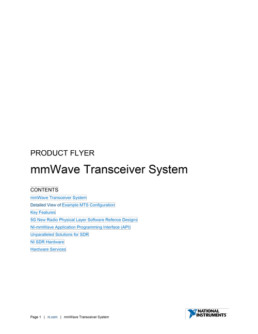5G Communications
4G/LTE and previous Generations RF Spectrum usage were all below 6GHz. 5G makes use of the RF Spectrum frequencies both below 6GHz as well as those into the mmWave Spectrum up to 76GHz.
Current Mil/Aero Communications operate under an umbrella of heterogeneous networks that enable the provision of interoperable voice, video and data services across a global environment, segmented according to security policies, transmission requirements and individual needs of the end-user.

NI 5G mmWave Transceiver System (MTS)
The mmWave Transceiver System (MTS) is a modular reconfigurable research and prototyping platform for two-way communications and channel sounding. Combined with LabVIEW software, this hardware can be reconfigured to service the continually growing demands of cutting-edge wireless research.
- Ideal system for prototyping real-time two-way communication systems
- Base configuration for bidirectional and unidirectional systems that scale from SISO to MIMO
- Flexible multi-FPGA architecture maximizes performance for computationally intensive algorithms
- 2 GHz real-time bandwidth throughout the entire system
- Modular radio heads with support for 24.25-33.4, 37-43.5, and 71-76 GHz
- Form factor that allows for lab work as well as outdoor field trials
Base Configurations
Model Bandwidth MIMO / SISO Link
865019-03 up to 2 GHz SISO Unidirectional - Downlink only
865019-04 up to 2 GHz SISO Bidirectional - Uplink & Downlink only
865019-05 up to 2 GHz 2x2 MIMO Unidirectional - Downlink only
865019-06 up to 2 GHz 2x2 MIMO Bidirectional - Uplink & Downlink only
NI mmWave Radio Heads
| Model | 24.25 to 33.4 GHz | 37 to 42.5 GHz | 71 to 76 GHz |
|---|---|---|---|
| Transmit only | mmRH 3642 | mmRH 3643 | mmRH 3647 |
| Receive only | mmRH 3652 | mmRH 3653 | mmRH 3657 |
| Transceiver | mmRH 3602 | mmRH 3603 | - |
Generations
- 1G – Voice only, solely analog technology with max speed of 2.4Kbps
- 2G – Voice, text, and limited data, with max speed of 1Mbps (EDGE)
- 3G – Voice, text, data, with a max speed of 2Mbps
- 4G/LTE – current standard, with a max speed of 1Gbps
- 5G – future standard, with a max speed of 20Gbps
5G RF Spectrum usage will be below 6GHz combined with mmWave to 76GHz
Future Mil/Aero 5G Communications will serve as an aggregator technology that will encompass a range of network types and technologies to serve both traditional voice, video and data requirements to the end-user, as well as opening up capabilities to enable connectivity across devices including vehicles, machine-to-machine, sensors and other devices. 5G promises significantly faster data rates, higher connectivity density, much lower latency, better network security, and improved battery life – among other improvements.
However, mmWave Signals are susceptible to ‘blocking’ from either natural or manmade structures. Therefore, intelligent Radar Beam Scanning and Forming techniques are necessities for 5G Communications.
- Beam Scanning – is the first process, so the base station can identify the most effective beam location for a specific user terminal; which will result in higher signal strength, particularly by using higher order modulation schemes.
- Beam Forming – the characterization of the spatial channel between antenna elements and user terminals. This is generally referred to as the ‘Channel State Information (CSI)’. CSI is used to digitally encode and decode the data transmitted and received by the antenna array.
DARPA is on a path to improve Mil/Aero Communications with Digital Phased-Arrays at mmWave frequencies.
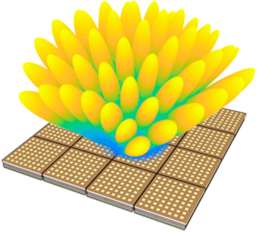
- DARPA mmWave Digital Arrays (MIDAS) Program is looking to solve adaptive beamforming problems and ensure wide solutions for diverse Mil/Aero applications.
- One initiative is to create a Digital Array tile that will enable multi-beam directional communications.
Related Products
NI 5G mmWave Transceiver System with NewRadio Base Station Software
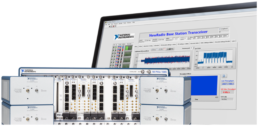
NewRadio Base Station Software
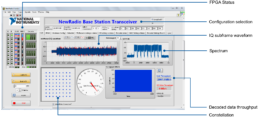
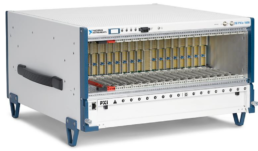
Model: PXIe-1086
18-Slot, 38W, Redundant for Hot-swappable
Part Number: 781720-01
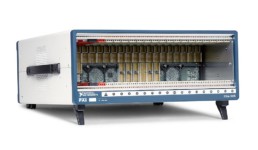
Model: PXIe-1095
18-Slot, 82W, Redundant for Hot-swappable
Part Number: 783882-01
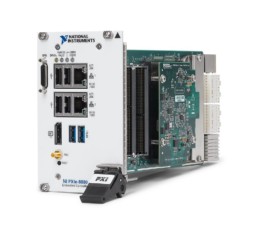
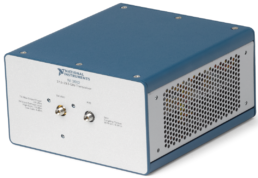
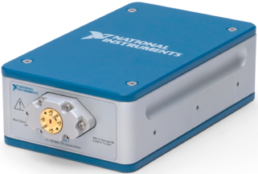
NI-RFmx NR for Development
Part Number: 786870-35
5G New Radio Generation and Analysis for NI PXI RF Hardware
Products & Solutions
Avionics Communications Mil/Aero
Avionics Communications is one of the most critical systems onboard any aircraft.
Abaco Systems offers an extensive line of MIL-STD-1553 databus products for all your test applications:
- Development, Test and Simulation
- Embedded
- Lab and Flightline
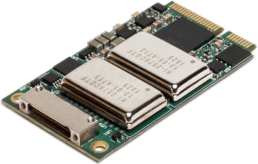
RA15-MPCIE MIL-STD-1553
RA15-MPCIE MIL-STD-1553 includes advanced API (Application Programming Interface) software that reduces application development time
Environmental
- Operating temperature range: -40°C to +85°C
- Relative humidity: Up to 95% (noncondensing)
Configuration
- 1 or 2 dual redundant MIL-STD-1553 Channels
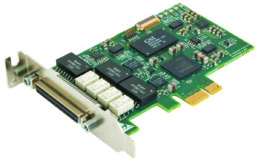
R15-LPCIE MIL-STD-1553
R15-LPCIE MIL-STD-1553 includes advanced API (Application Programming Interface) software that reduces application development time
Available Software GUI
- BT-1553 Analysis, Test and Simulation for MIL-STD-1553
- LV-1553 LabVIEW for MIL-STD-1553
Environmental
- Operating temperature range: -40°C to +70°C
- Relative humidity: 5 to 95% (non-condensing)
Configuration
- 1 or 2 dual redundant MIL-STD-1553 Channels
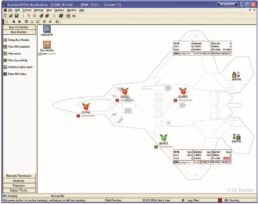
RAR15XF
RAR15XF dual MIL-STD-1553 and ARINC-429 includes advanced API (Application Programming Interface) software that reduces application development time
Environmental
- Operating temperature range: -40°C to +75°C
- Relative humidity: Up to 95% (noncondensing)
Configurations
- 2 or 4 dual redundant MIL-STD-1553 Channels
- (10) Rx and 4 or 8 bi-directional ARINC-429 Channels
Important Factors
- Deterministic behavior
- Fault tolerance
- Redundancy
The key attribute required in Avionics Communications is ‘flexibility’ – both the flexibility to transition from the lab to the embedded world, and the flexibility to simulate and test a wide range of bus configurations with a single interface.
DoD MIL/AERO Avionics Communications Buses
- MIL-STD-1397C primary Navy Systems digital bus
- MIL-STD-1553 primary MIL/AERO Avionics Communications bus
- MIL-STD-1760 a variant of MIL-STD-1553 primarily used with weapon buses
- MIL-STD-1773 Fiber optic bus version of MIL-STD-1553

